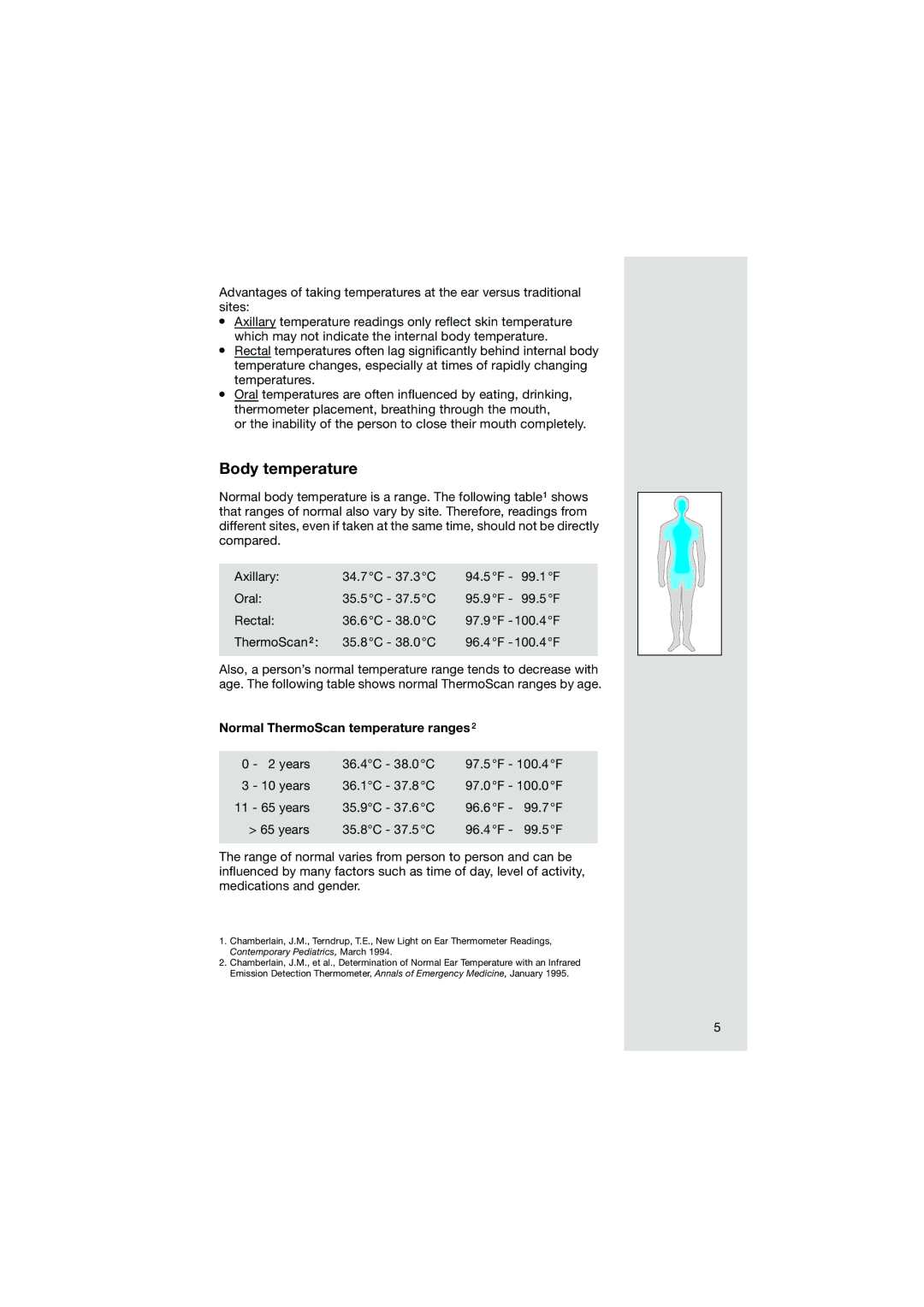
Advantages of taking temperatures at the ear versus traditional sites:
øAxillary temperature readings only reflect skin temperature which may not indicate the internal body temperature.
øRectal temperatures often lag significantly behind internal body temperature changes, especially at times of rapidly changing temperatures.
øOral temperatures are often influenced by eating, drinking, thermometer placement, breathing through the mouth,
or the inability of the person to close their mouth completely.
Body temperature
Normal body temperature is a range. The following table@ shows that ranges of normal also vary by site. Therefore, readings from different sites, even if taken at the same time, should not be directly compared.
Axillary: | 34.7°C - 37.3°C | 94.5°F - | 99.1°F |
Oral: | 35.5°C - 37.5°C | 95.9°F - | 99.5°F |
Rectal: | 36.6°C - 38.0°C | 97.9°F - 100.4°F | |
ThermoScan ” : | 35.8°C - 38.0°C | 96.4°F - 100.4°F | |
|
|
|
|
Also, a person’s normal temperature range tends to decrease with age. The following table shows normal ThermoScan ranges by age.
Normal ThermoScan temperature ranges ”
0 | - 2 years | 36.4°C - 38.0°C | 97.5°F - 100.4°F | |
3 | - 10 years | 36.1°C - 37.8°C | 97.0°F - 100.0°F | |
11 | - 65 years | 35.9°C - 37.6°C | 96.6°F - | 99.7°F |
| > 65 years | 35.8°C - 37.5°C | 96.4°F - | 99.5°F |
|
|
|
|
|
The range of normal varies from person to person and can be influenced by many factors such as time of day, level of activity, medications and gender.
1.Chamberlain, J.M., Terndrup, T.E., New Light on Ear Thermometer Readings, Contemporary Pediatrics, March 1994.
2.Chamberlain, J.M., et al., Determination of Normal Ear Temperature with an Infrared Emission Detection Thermometer, Annals of Emergency Medicine, January 1995.
5
